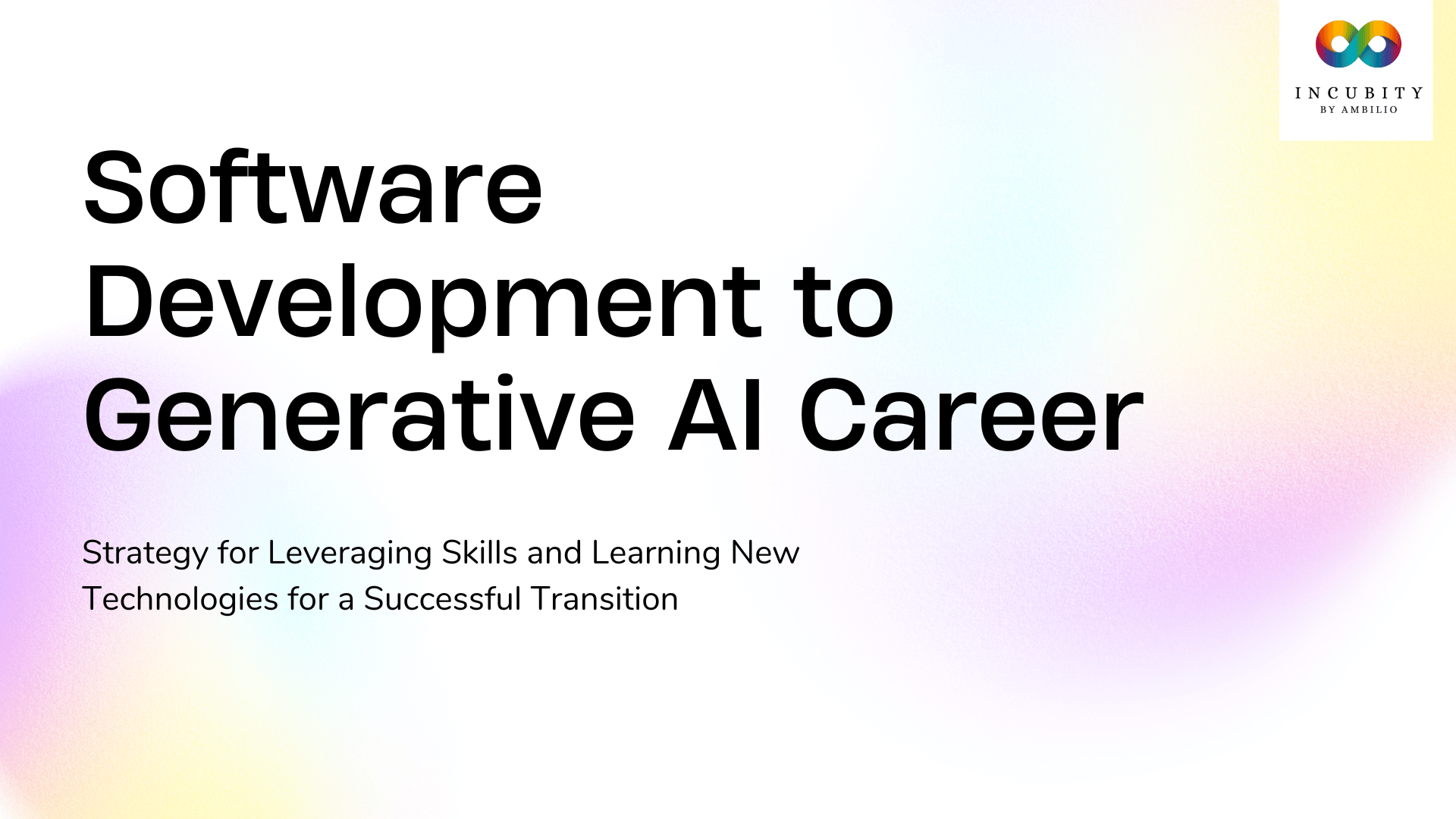In the dynamic world of technology, career transitions have become more common, especially in the burgeoning field of artificial intelligence (AI). For software developers seeking new horizons, generative AI offers a promising path. Generative AI involves creating algorithms and models capable of producing new, original content, from images and text to music and even code. This article provides a comprehensive guide to smoothly transition from software development to generative AI, capitalizing on past experiences and acquiring new skills.
Leveraging Past Experiences
Software developers possess a unique set of skills that can be invaluable in the realm of generative AI.
- Problem-Solving Skills: As a software developer, you’ve honed your ability to tackle complex problems systematically. This skill is crucial in generative AI, where designing and training models require breaking down challenges into manageable components.
- Coding Proficiency: Your proficiency in programming languages like Python provides a solid foundation for delving into generative AI. Python is widely used in AI development, including frameworks like TensorFlow and PyTorch.
- Software Development Practices: Experience with version control systems, debugging, and testing methodologies equips you with essential skills for building and deploying generative AI systems. These practices ensure the reliability and maintainability of AI models.
Acquiring New Skills
To transition successfully, software developers need to learn new skills specific to generative AI.
- Machine Learning Fundamentals: Understanding the core concepts of machine learning, including supervised and unsupervised learning, loss functions, and optimization algorithms, is crucial. This knowledge forms the basis of generative AI development.
- Deep Learning Techniques: Dive into deep learning architectures such as convolutional neural networks (CNNs) and recurrent neural networks (RNNs). These architectures power many generative AI models and are essential for understanding advanced concepts.
- Generative AI Models: Explore different generative models like GPT, Stable Diffusion, etc. Each model has unique capabilities and applications, and understanding them broadens your toolkit as a generative AI practitioner.
- Data Preparation and Cleaning: Generative AI models rely on high-quality data for training. Learn techniques for data cleaning, preprocessing, and augmentation to ensure the robustness and efficacy of your models.
Learning Strategies for Transition from Software Development to Generative AI
To successfully transition to generative AI, adopt a combination of learning strategies that cater to your needs and pace.
- Self-Paced Courses: Enroll in online courses offered by platforms like Incubity, Coursera, Udacity, and edX. These courses cover a wide range of topics in machine learning and AI, allowing you to learn at your own pace.
- Live Trainings and Workshops: Attend live training sessions and workshops conducted by experts in the field. These interactive sessions provide opportunities for real-time learning and Q&A sessions.
- Mentorship Programs: Seek mentorship from seasoned professionals in the generative AI industry. Mentors can offer guidance, share insights, and provide valuable feedback on your progress.
Building a Strong Portfolio of Generative AI Projects
To showcase your expertise in generative AI, engage in hands-on projects that allow you to apply your newly acquired skills.
- Internships: Participate in internships that offer practical experience in generative AI. This experience can provide valuable insights into the industry and help you build a strong portfolio.
- Open-Source Projects: Contribute to open-source projects related to generative AI. This not only enhances your skills but also demonstrates your commitment to the field.
- Personal Projects: Work on personal projects that leverage generative AI. This allows you to explore your interests and showcase your creativity while building a diverse portfolio.
Final Words
Transitioning from software development to generative AI is an exciting journey that requires dedication, continuous learning, and hands-on practice. By leveraging your existing skills, embracing new technologies, and adopting effective learning strategies, you can successfully navigate this transition and embark on a rewarding career in generative AI. Remember to stay curious, seek opportunities for growth, and never underestimate the power of perseverance in achieving your career goals. With the right mindset and approach, the world of generative AI is yours to explore and conquer.



